
Alameda Sailing Extravaganza
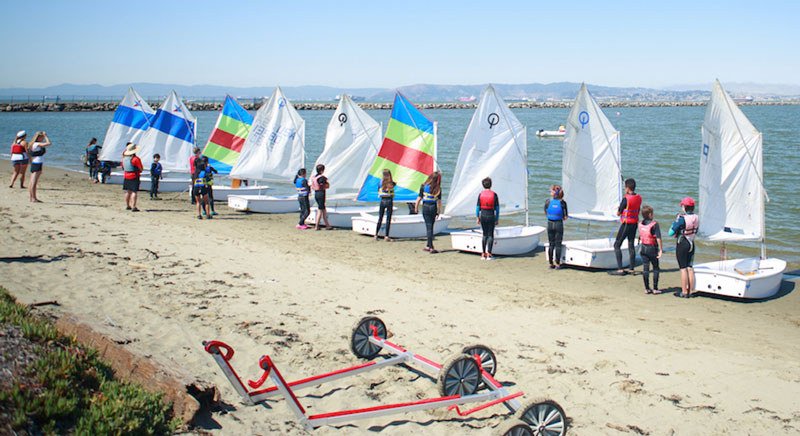
Alameda Community Sailing Center invites members of the public to their Sailing Extravaganza on Saturday, May 21. "This event is open to the community, and we hope to provide a sailing experience for all," writes Victoria Anweiler, ACSC’s program director.
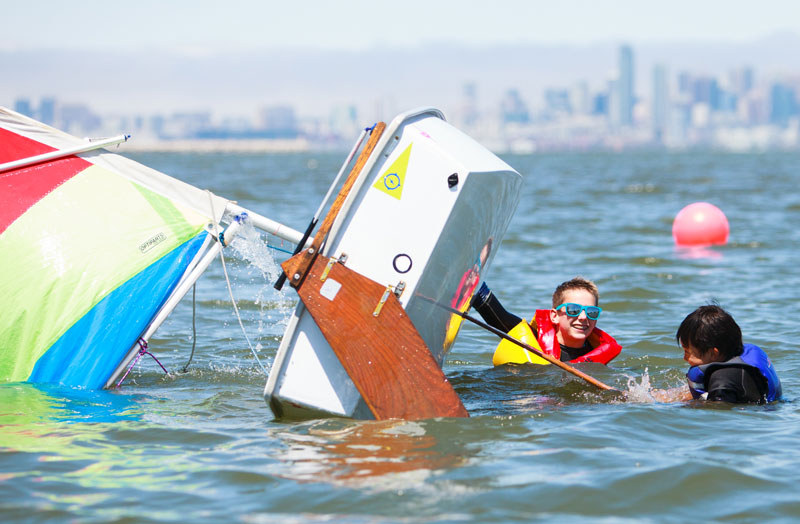
As a collaboration with National Safe Boating Week, ACSC will take community members sailing and host a potluck BBQ and open house to promote the nonprofit sailing center. "We’ll show you some tips and tricks on how to stay safe on the water, and we’ll have a PFD giveaway," said Anweiler.
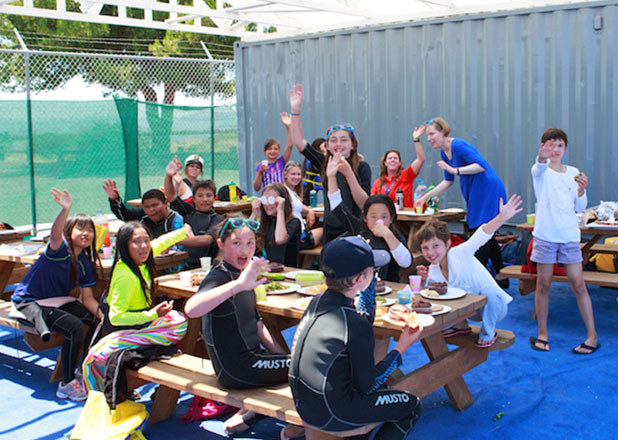
The potluck BBQ will begin at 12:30 p.m., and ACSC will provide hot dogs and hamburgers. Visitors should bring a side dish or dessert to share and bring their own drinks. "If you would like to try sailing please bring: water shoes, warm non-cotton layers and a dry change of clothes," advises Anweiler. "Be prepared to get wet. We will provide PFDs, boats and on-water assistance. We cannot guarantee everyone will get on the water due to space, but we will try our best."
Go to www.sailalameda.org to learn more about ACSC.
New Apps Detail Vital Nav Info
Navigating, particularly through inshore waters, can be a tricky business — especially when lights and other navigational aids can’t be found at the locations where your charts say they should be. Professional mariners know to check US Coast Guard Notices to Mariners often for updates. And thanks to a newly released app, recreational boats can access such info 24/7 from Android smart phones or tablets.
Last month merchant mariner and software developer Captain Mike Maurice announced the release of a set of applications that display the Light Lists, Notices to Mariners and additional data, all of which have been optimized to work offline.
"The first application downloads and displays the Local Notice to Mariners (in PDF)," explains Maurice, "which the user can update once each week, from a high-speed server at my website. No ads, no user tracking.
"The second application displays the seven volume list of lights (48,000) for the entire United States. Each item has a picture that represents the type of item: light, horn, including over 30 different types of buoys with their various colors and physical styles. Each item can be accessed for its details. And, includes all the data from the original PDF or paper document which mariners are familiar with: location, light characteristic, remarks, type of structure, etc."
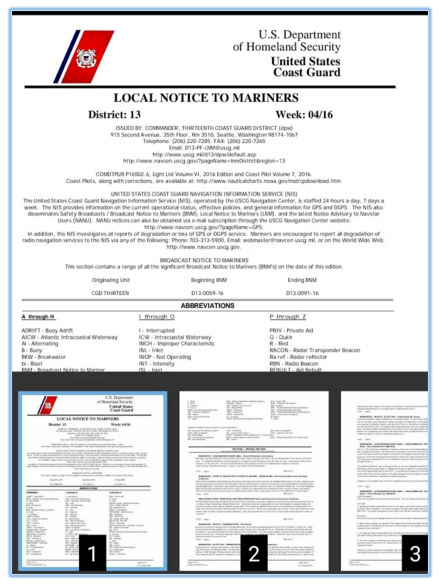
"The third application displays in a conventional list or a graphical map format, the so called discrepancies and temporary changes to the light lists, of which there are about 2500 items. These discrepancies contain important safety information which warns of hazards to navigation, lights extinguished, buoys off station or adrift and other issues. The map format provides a powerful, easy to use tool to select nearby items.
"Each item can be individually selected which displays detail information. An item once selected is saved and will be the focus in the list format or the map. The data is being updated about once a week."
The new apps con be downloaded from the Google Play store. See this link. Sounds like great info to have at your fingertips. Our only question is: Will an iPhone/iPad version be available soon also?
When Monkey’s Fists Go Bad

©2016Latitude 38 Media, LLC
‘Monkey’s fist’ is the name given to a knot made with three to six turns, which is tied at the end of a rope line, making one end of the line heavier and thus easier to toss. The monkey’s fist is most often used in heaving lines.
In the case of larger yachts and ships, a small line with a monkey’s fist is attached to the end of a normal dockline, a dockline that can’t be thrown ashore because it’s too heavy. Once the smaller line with the monkey’s fist is thrown ashore, the person ashore pulls in the dockline attached to it and secures it around a bollard.
In some cases, some sort of weight is placed inside the monkey’s fist, making it heavier and thus easier to throw. All sorts of things have been used as weights — stones, marbles, bolts, grapeshot, lead — you name it.
There is a proper technique to both throwing and receiving a line with a monkey’s fist. To throw such a line, you position your body sideways to where you want to throw it. You then hold most of the coils in the leading hand, and several coils and the monkey’s fist in the trailing hand. Making a half circular motion with your body, you throw with the back arm, straightening it out, and follow through with the forward arm. Getting good at throwing a heaving line with a monkey’s fist takes practice.
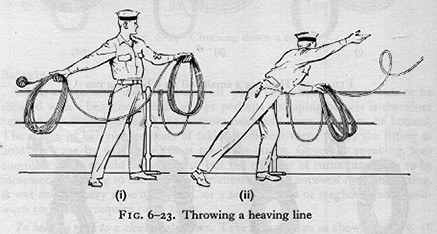
A month or two ago we were standing by a bollard at the Charles de Gaulle Quai in St. Barth watching a beautiful 180-ft dark-hulled yacht — which shall go unnamed — being backed by her captain toward the cement quay and next to an even larger poweryacht for a Med-tie. Manuel, from the port captain’s office, was standing at the other bollard.
The whole Med-tying process, starting with the dropping of two anchors on the other side of the harbor, takes about 15 minutes for a mega-yacht. It was quite a spectacle and drew a considerable crowd. Whatever captain of industry owned or had chartered the boat, with his wife and guests at hand, silently observed the captain and crew at work. The eight or so uniformed members of the crew attentively manned their stations, awaiting commands from their captain, fully aware of the audience.
After the captain had skillfully backed and thrustered the great yacht in position about 15 feet from the quay, he gave the order to toss the heaving lines ashore. Although no word was spoken, it was understood that Manuel would get one line and we would get the other. The deckhand throwing the weighted monkey’s fist to Manuel did an excellent job, as it flew about 15 feet past him, and was thus easily retrieved so the bigger dockline could be pulled in and secured.
All eyes were now upon another deckhand who was going to toss the heaving line in the direction of the Wanderer. It’s unclear if the line had been poorly coiled or what, but when the line with the monkey’s fist got about halfway to the quay, its forward motion abruptly halted and it splashed into the water. The silence was deafening.
The red-faced deckhand quickly pulled the dripping line back in as his humiliated crewmates looked on in shame. The captain looked on stonefaced, but if there had been a gun handy, we think he might have used it. The owner/charterer was impassive, as if the blunder was beneath him and his yacht. Fortunately, the normal wind on the beam was light, the line was thrown again, this time properly, and the yacht was secured.
As far as the Wanderer is concerned, the technique for being on the receiving end of a line with a monkey’s fist depends on how big the line is and if the monkey’s fist has a weight in the middle. If the line and fist are relatively light, and the distance it has to be thrown isn’t very great, we hold our arm out perpendicular to our body, hoping the tosser can hit our outstretched arm with the line. If the line is heavier and/or there is a weight in the fist, our technique consists of getting the hell out of the way of the line until it lands on the ground, then retrieving it.
The problem with monkey’s fists, particularly weighted ones, is that they can cause considerable injury. Robin Stout of the Redondo Beach-based Aleutian 51 Mermaid knows this all too well, for while serving as a line-handler on the yacht Nirvana going through the Panama Canal in late April, she was hit in the eye with a monkey’s fist thrown by one of the Canal workers. It wasn’t something she could have avoided.
“When the guy realized he had overthrown the line with the monkey fist, he gave it a little tug back while it was still in mid-air,” Stout recalls. “At the last second the monkey fist became like the end of a whip and hit me in the eye.”
There are not many regulations to be found on how to restrict weights of heaving lines, but at least the "Code for Safe Working Practices for Merchant Seamen" issued by the UK Maritime and Coastguard Agency, is very clear on this subject. "Vessel’s heaving lines should be constructed with a monkey’s fist at one end. To prevent personal injury, the fist should not contain any added weighting material." Obviously that’s not the way they do things in Panama.
Have you ever had an interesting monkey’s fist or heavy-line incident? If so, we’d like to hear about it.
